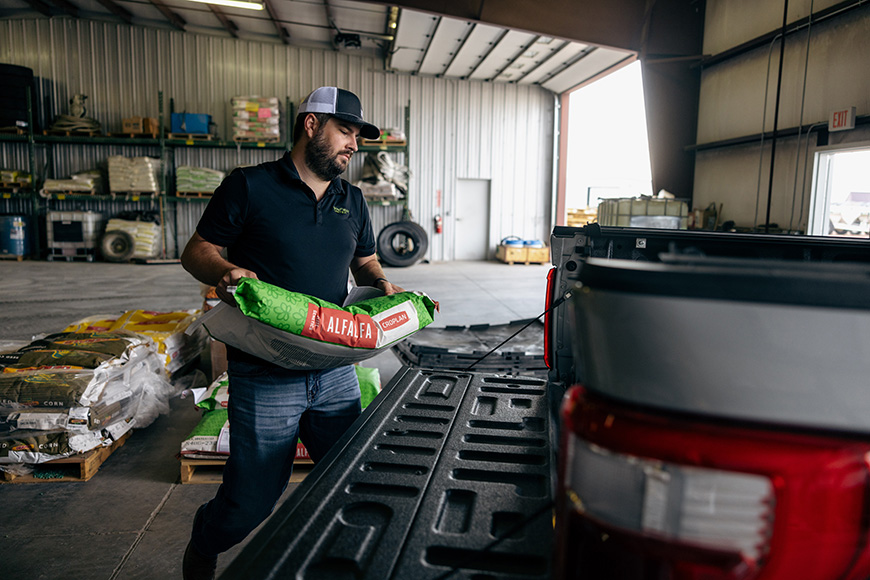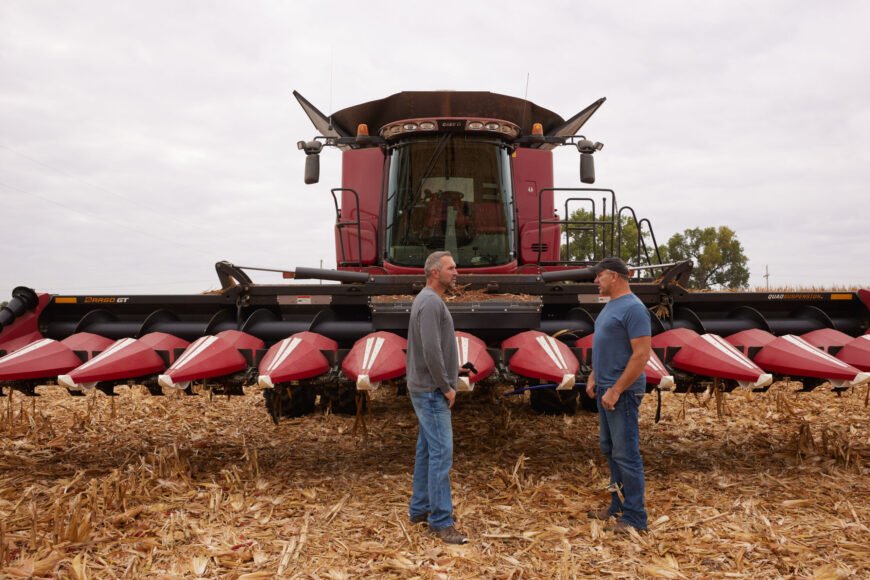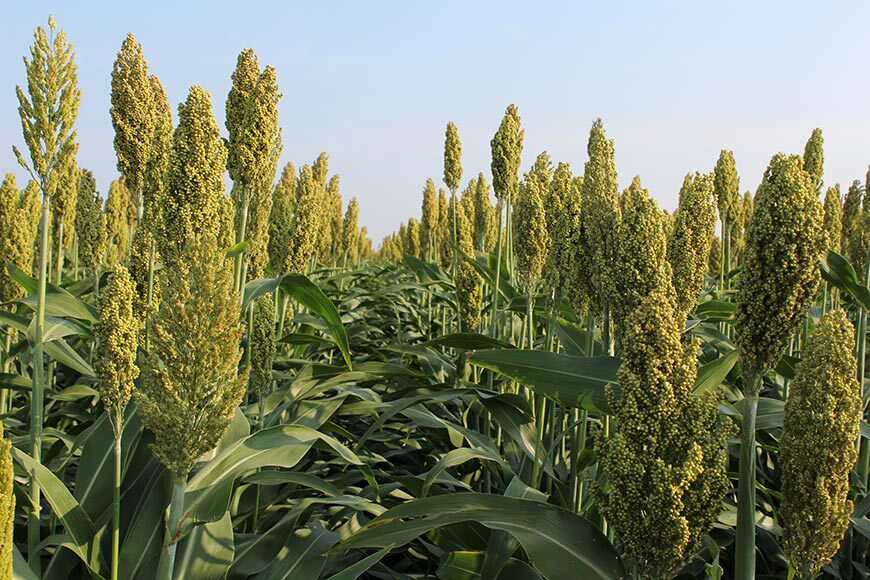How To Establish A Strong Alfalfa Stand

Unlike annuals like corn and soybeans, planting an alfalfa field sets the stage for several seasons to come. Thick and uniform stands lead to higher yield potential throughout the season so it’s important to get it right from the start. Follow these best practices to help establish a strong alfalfa stand.
When To Plant Alfalfa
Timing is crucial for successful alfalfa seeding. Ensuring suitable soil temperatures (around 50 F) and moisture levels has a large impact on germination. If you plant into conditions that are too cold and wet, you risk seed rot, emergence delays and poor stand density.
In the Upper Midwest, suitable timing for alfalfa planting tends to fall between mid-April and May. Sometimes, in northernmost dairy regions, planting can even go into early June.
Summer seeding dates are optimal between mid-July and August for the Upper Midwest with an emphasis on mid-July for northerners. In warmer climates, early September is fair game.
How Deep To Plant Alfalfa
Planting depth is another key factor impacting alfalfa stands. Seeds planted too deep can lead to reduced emergence and stand density. In dry conditions, seeds planted too shallow could dry out. It’s important to find that balance where seed-to-soil contact is optimized, which is typically around three-eighths of an inch below the soil surface.
Certain seeding equipment to control depth and press wheels to firm soil over and around seeds can also help promote seed-to-soil contact. Prior to seeding, using rollers with corrugations can help crush lumps and reduce air pockets. Smooth rollers may not provide the ideal soil lump crushing effect.
How To Determine Alfalfa Seeding Rates
Seeding rates need to be high enough to ensure a minimum stand density of 30-35 plants per square foot. An average of 18-22 pounds of seed per acre paired with proper management can provide a productive stand.
Soil Fertility Needs
Nutrient deficiencies can hinder yield and quality later in the season. If you want to establish strong alfalfa stands, soil testing before planting is critical.
Here’s what you need to know:
- pH: A neutral level between 6.8 and 7.1 is ideal.
- Potassium (K): 150-170 parts per million (ppm) is a target level for high-yield alfalfa.
- Phosphorous (P): 25-30 ppm is a target level for high-yield alfalfa.
- Sulfur (S) and boron (B): Conduct tissue tests in-season and follow guidelines provided by the results.
Managing Herbicide Carryover
Last year’s crops and their residual chemistries have the potential to negatively impact your alfalfa. This can be the cause of stunting, uneven stands or even dead seedlings.
Review the chemistries used on the field prior, and always consider what you’re spraying on corn, soybean or wheat fields you want to switch to alfalfa the following year.
Weed Management
The first 30 days of stand establishment are critical. This is also the time weeds are typically most troublesome. Keeping your alfalfa field as weed free as possible to avoid the loss of stand density and yield to weed competition.
The Roundup Ready® Alfalfa trait, available in many CROPLAN® alfalfa varieties, provides weed control flexibility so you can get more aggressive with your herbicide plan. Plus, a fall Roundup® application can be a great tool to control winter annual weeds.
CROPLAN Alfalfa Seed
Backed by 25-plus years of unbiased testing and 6 million Answer Plot® data points, CROPLAN seed doesn’t just come with quality genetics. From the latest trait technologies to advanced alfalfa seed treatment options, CROPLAN alfalfa varieties are ready to perform.
Several CROPLAN alfalfa varieties, including Rebound AA, LegenDairy AA, Gunner AA, RR AphaTron AA and HVX MegaTron AA provide enhanced disease resistance against Aphanomyces root rot and Anthracnose. So when you see “AA” in the variety name, you can rest assured that it can provide higher yield and forage quality potential.
For added performance potential, CROPLAN varieties contain GroZone® plus Advanced Coating® Zn seed treatment, which helps alfalfa stands get off to a fast, healthy start.
Plus, HVX MegaTron and HVX MegaTron AA have the HarvXtra® reduced-lignin alfalfa trait, which can provide 17% higher neutral detergent fiber digestibility (NDFD) across cuttings compared to conventional varieties.* That means you have the flexibility to maintain harvest schedules or increase time between cuttings, whichever is best for you and your operation.
Strong alfalfa stands begin with the seed. Talk to your local CROPLAN retailer to start your success story.
*Data is an average of CROPLAN HarvXtra Harvatron, Megatron and Driver varieties compared to LegenDairy XHD and Hi-Gest® 360, harvested in 2014 and 2015 from Nampa, Idaho; Touchet, Wash.; Boone, Iowa; West Salem, Wis.; and Mt. Joy, Pa.
All photos are either the property of WinField United or used with permission.
© 2024 WinField United. Important: Before use always read and follow label instructions. Crop performance is dependent on several factors many of which are beyond the control of WinField United, including without limitation, soil type, pest pressures, agronomic practices and weather conditions. Growers are encouraged to consider data from multiple locations, over multiple years and to be mindful of how such agronomic conditions could impact results. Advanced Coating, Answer Plot, CROPLAN, GroZone, gunner AA, LegenDairy AA, Rebound AA, RR Aphatron AA and WinField are trademarks of WinField United. All other trademarks are the property of their respective owners.



.jpeg?ext=.jpeg)

